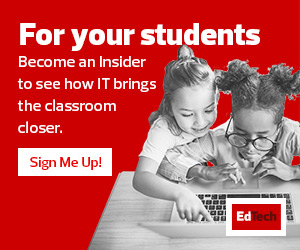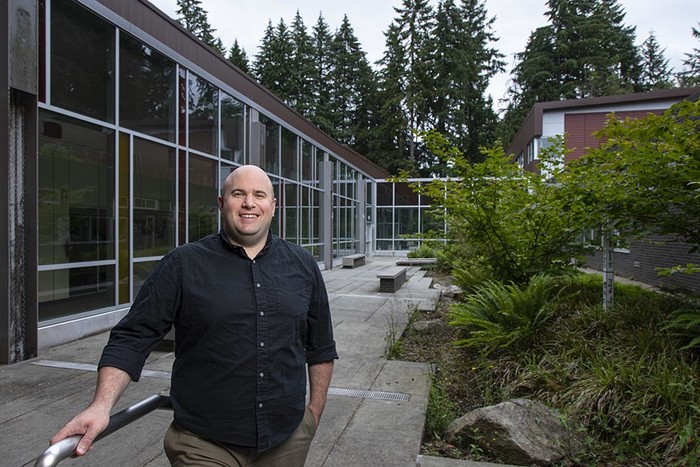In that same survey, however, educators indicated that transitioning their emergency one-to-one deployments into permanent features has not always been smooth.
For districts like BSD, having one-to-one programs for high schoolers in place prior to the pandemic allowed them to address many of the bugs before extending the program to elementary students.
New One-to-One Programs Must Address Common Hurdles
As schools look to position one-to-one devices for the longer term, those in districts with more mature programs say hitting bumps in the road is inevitable. They say teachers and districts alike can face challenges with implementation.
“In some cases, teachers don’t know how to use the devices themselves. In other cases, they know how to use the devices but need additional support in effectively integrating the technology into the curriculum,” says Lorrie Owens, CTO at the San Mateo County Office of Education. “At the same time, IT teams must maintain the devices and manage all of the supporting infrastructure to ensure the devices actually perform.”
Device management is one of several potential technology hurdles. Schools may not have sufficient Wi-Fi infrastructure to support so many simultaneous users, or they may struggle to implement access control across multiple applications.
K–12 technology leaders nationwide say they have adopted new strategies to ensure one-to-one programs succeed for the long haul, and they have invested in new technologies to help drive momentum.
DISCOVER: Here are 7 sustainability planning tips for K–12 technology leaders.
Sustainability Planning and Professional Development Drive Success
Oscar Rico, executive director of technology for the Canutillo Independent School District in Texas, drove its COVID-19 response, in part, by implementing tablets for pre-K to second grade students and laptops for students in grades three through 12.
To ensure financial viability over the long term, Rico engaged in some thoughtful planning.
“Our multiyear plan includes a cycling program within our technology fleet that includes a built-in buyback option,” he says. “That gives me a down payment on what I’m going to have to purchase five years from now.”
He also leveraged community buy-in for the expanded device regimen. “Whenever we were evaluating devices, for example, we always wanted to invite in community and elected officials,” he says.
Districts that succeed with one-to-one programs typically pay close attention to implementation, looking for ways to increase professional development for teachers around these new tools. For some, that means starting small.
That’s the approach Jim Shreve has taken. As technology director at Nome Public Schools in Alaska, he oversaw a rollout of devices that led to HP Chromebooks in the junior high and high schools, tablets for kindergarten to grade two and Chromebooks for grades three to five. All the while, he’s helped teachers adapt to the new program.
READ MORE: K–12 districts choose Chromebooks for educators to elevate teaching.
“We’re not forcing anyone. The teachers can elect to use it,” he says. “This approach actually increases overall long-term adoption because the teachers ease into using the technology.”
In this way, teachers have often taken the lead. “Some of our educators are early adopters, and they get really involved with it. They tend to grow their knowledge and then share that with other educators,” he says.
Infrastructure and Tools Are Critical to One-to-One Success
Several enabling technologies can also help schools with effective one-to-one implementations.“It starts with making sure the device you’ve selected has a battery life that will last the entire school day,” Onstot says.
Shreve also leverages charging carts. “You need to make sure you have enough storage for all those devices and enough charging capacity,” he says. “So, we have some Bretford charging carts, and we also have quite a few of the Anywhere Carts and some LocknCharge carts.”
Rico, meanwhile, has invested in connectivity to ensure students can make full use of their devices in school and at home. “We upgraded our current infrastructure with Cisco Meraki access points in our buildings to sustain connectivity as the kids were coming back in,” he says. In addition, the district built a wireless mesh network to support kids at home, with Cisco switches and Meraki access points that go out into the community. “Students authenticate onto our network, and that traffic runs through our on-prem web filtering, so we are able to provide the same environment in our schools and on the front porches of their homes,” Rico says.
Onstot has turned to access control tools to simplify using multiple learning apps. “All apps need to be single sign-on or at least use a unified username and password,” he says. “We use Clever as much as we can for authenticating and rostering. Without that approach, teachers may end up with 15 different usernames and passwords for their curriculum.”












